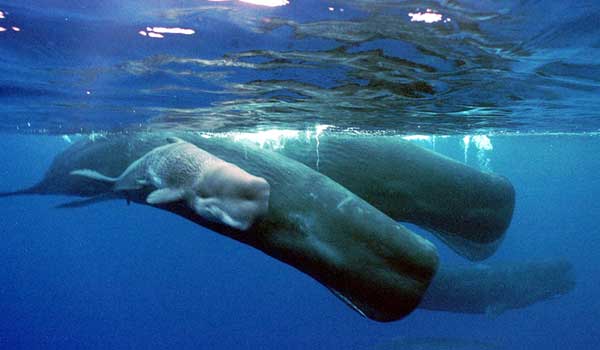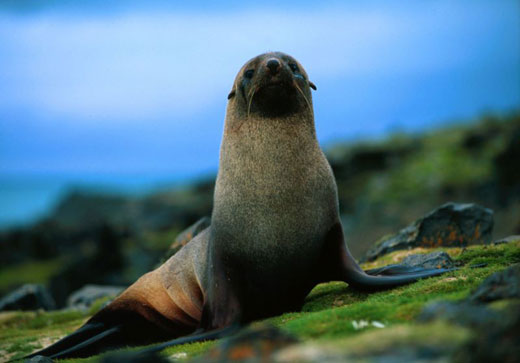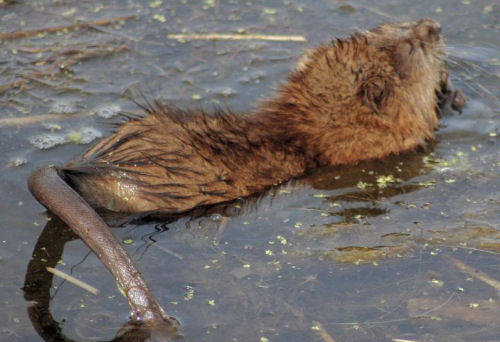Sperm Whale
Like all whales, the Sperm Whale is a mammal, with it’s natural habitat in the seas and they can be seen in every ocean of the world, in both topic and cool oceans. It can grow up to 20.5 metres (67 ft) and is the largest toothed animal in the world.
Sperm Whales can easily be recognized by their extremely large heads (usually about one third of their body size) and their gray skin, though there are cases of the skin being brown or even black.

Drawing of a Sperm Whale
Their name comes from substance found in their heads called spermaceti, mistakenly thought to be semen at first. In fact, it is wax-like substance devoid of any taste or smell and is therefore a valuable ingredient in cosmetics, medicine and other manufactures.
Sperm Whale numbers were thinned during the whaling years, until whale hunting was reduced and a better substitute was found for spermaceti. As of now, Sperm Whales are still vulnerable, but with a number of multiple hundred thousand Sperm Whales around the globe, they’re far from being extinct.
Sperm Whales feed off octopuses, fish and even colossal squids found in very deep parts of the ocean. They are believed to be able to reach depth of 3 kilometres (1.9 mi) making them the deepest divers of the sea.
These whales usually live in pods – either females along with calves or a number of mature males together. The oldest males usually leave the pods and live solitary lives. These groups ensure adult Sperm Whales have no non-human predatory threats, as these groups can easily repel attacks of any sea creature. The only hope of predators (such as orca) is to extract and then kill a Sperm Whale calf.
Sperm Whale mating habits do not depend on the seasons and a calf is born in about 16 months. Birth takes place near the surface of the water, the mother helps the baby calf remain on the surface for a while and in 30 minutes after the birth, the calf can swim. Calves are born about 4 metres (13 ft) long and and weigh approximately 1 ton. Twins are very unusual and mostly it’s only one calf. A calf can drink 20kg (45 pounds) of milk every day.
Females give birth to calves every three to six years and nurture them until their maturity, which is about 9 years for females and 18 years for males. After that, males usually join a bull pod, while females either stay in the existing female pod or move to another one. Sperm Whales have a life expectancy of over 70 years.
The future of Sperm Whales looks brighter than most of the whales’ as their numbers are estimated at about 200’000 worldwide. Their greatest threat is entanglement in fishing nets, pollution and collision with ships, however the number of Sperm Whales is increasing and we might see their numbers increase to 1,100,000, which is the estimated number of Sperm Whale population before commercial whale hunting began three centuries ago.




Sperm whales are my favorite type of whale. Sperm whales are the 5th largest whale. A sperm whale is a colossal squid’s worst enemy.
wow thats nice
Sperm whales great to have around. They weigh up to 40 to 50 tons.They nearly grow as big as the Blue whale. The sperm whale is the only tooth whale on the top 10 largest whales.
Sperm whales I love because there harmless to humans and my friends think it looks like a box but to me its a swimming beauty.
i like the frog at the side and i love that drawing of a sperm whale.